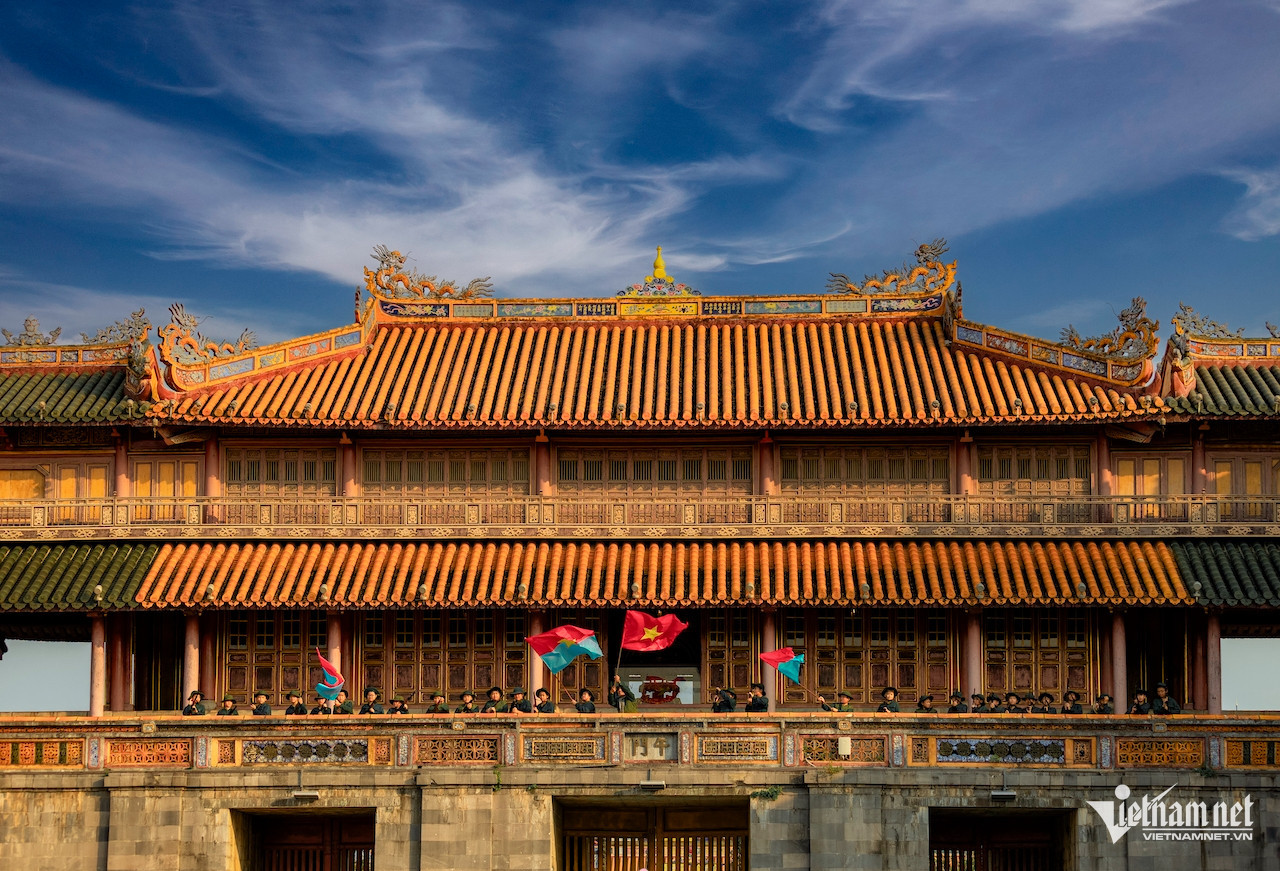For years, Hue was often described as “beautiful but quiet,” with its streets falling silent by 8 p.m. But in recent years, the city has redefined its nighttime identity with heritage-driven experiences and a dynamic economy, attracting millions of visitors annually.
Breathing life into the night with heritage

In December 2020, the Hue People's Council passed Resolution 74, approving the city’s Nighttime Tourism and Services Development Plan for 2021-2025, with a vision toward 2030.
After more than four years of implementation, Hue has gradually shaped a diverse tourism ecosystem that enhances visitor experience and encourages longer stays.
Key projects like the Dong Ba Night Market, Truong Dinh Food Street, Chu Van An-Pham Ngu Lao-Vo Thi Sau Walking Street, the Imperial City Night Street, and Hai Ba Trung pedestrian route have become steady tourist draws.
Alongside these developments, the city has revitalized cultural landmarks such as the Imperial Citadel, the Perfume River banks, Da Vien Islet, and Vong Canh Hill.
These efforts not only redefine Hue’s urban image but also lay the groundwork for a sustainable tourism economy rooted in cultural heritage.
In 2025, Hue is hosting the National Tourism Year under the theme “Hue - Ancient Capital, New Opportunity,” alongside the Hue Festival. This major spotlight has significantly boosted the local tourism sector.
In the first five months of the year, the city welcomed over 2.7 million visitors, a 67% increase year-over-year, with international arrivals reaching nearly 1.1 million.
Tourism revenue exceeded USD 196 million, up more than 55%, making a significant contribution to local economic growth. Overnight stays have also improved markedly.
The city's nighttime economy is increasingly fueled by grassroots participation. Around Nguyen Dinh Chieu pedestrian street and Le Loi road, night-time food zones remain bustling until dawn.
Many young locals are launching rooftop cafés, small bars, and mobile food stalls, creating jobs and stimulating local consumption.
Hue is expanding its night-time footprint by opening new walking streets near the Imperial City and along the Perfume River.
Museums and historical sites are experimenting with extended evening hours, and river tours are being developed to take advantage of the scenic waterways.
Not just about staying up late
Hue is not chasing nightlife through noise and neon. Instead, the city follows its own path, bringing heritage into urban life, infusing cultural identity into night experiences, and placing its people at the heart of this transformation. Still, challenges remain.
According to a study by the Hue City Institute for Research and Development, the night economy remains relatively basic - focused primarily on food and drink - lacking unique, standout brands to appeal to a global audience. Activities are small in scale, fragmented, and deliver limited economic and social impact.
Night operations also introduce issues like noise and light pollution, waste, fire risks, and added strain on infrastructure, such as waste treatment, power, water, sanitation, food safety, product origin, and pricing. Skilled labor for nighttime services is also in short supply.
Experts argue that the night economy must foster a vibrant urban lifestyle. For Hue to realize its full potential, the city should actively encourage businesses, entrepreneurs, and households to invest in and capitalize on night-time tourism.
The goal is to turn the night economy into a robust tourism product that weaves heritage into modern life, driving local economic and social growth.
According to tourism officials, if the current pace continues with well-orchestrated events, Hue could surpass 6 million visitors in 2025.
In the first half of the year alone, the city expects to surpass 3.3 million visitors, including 1.2 million international arrivals.
PV